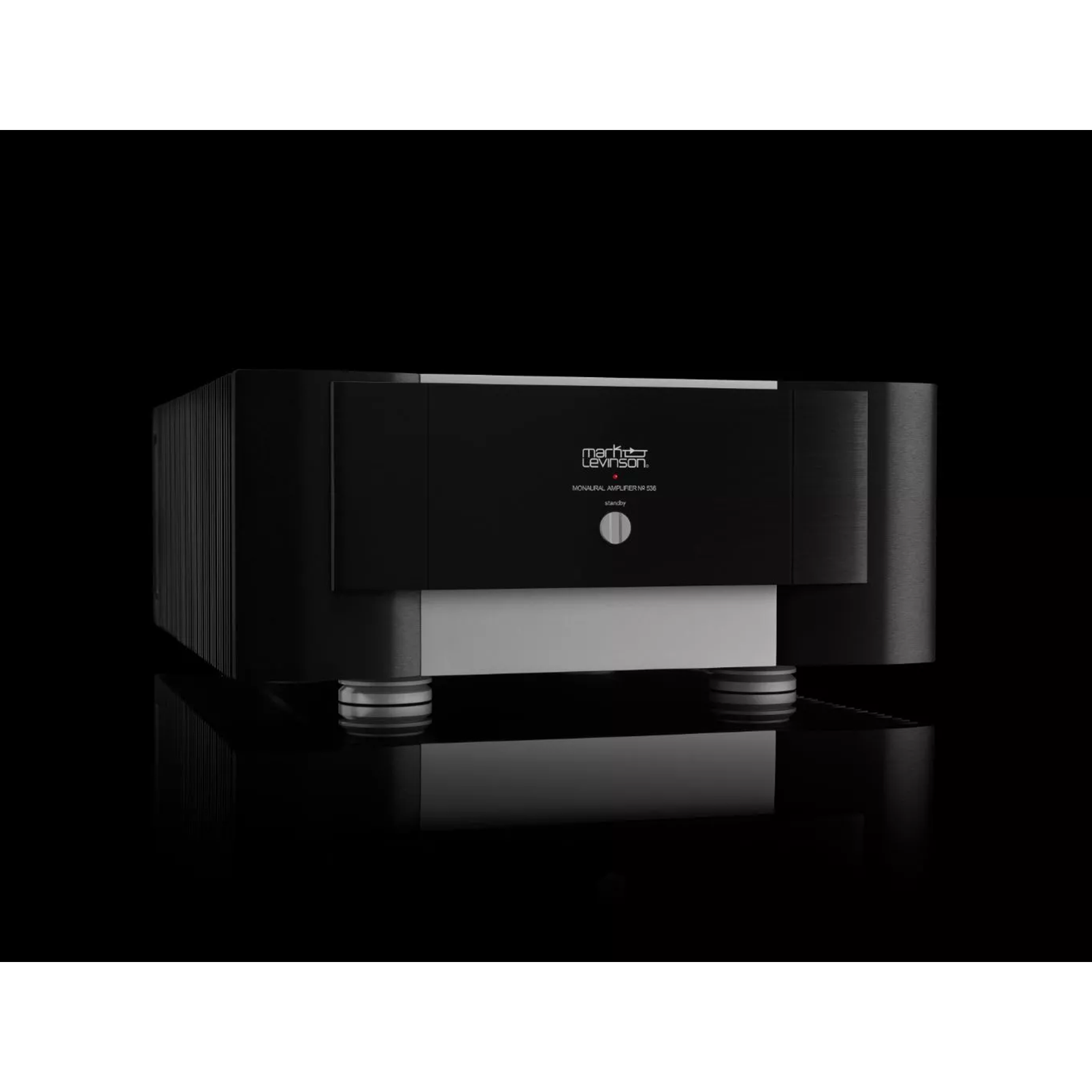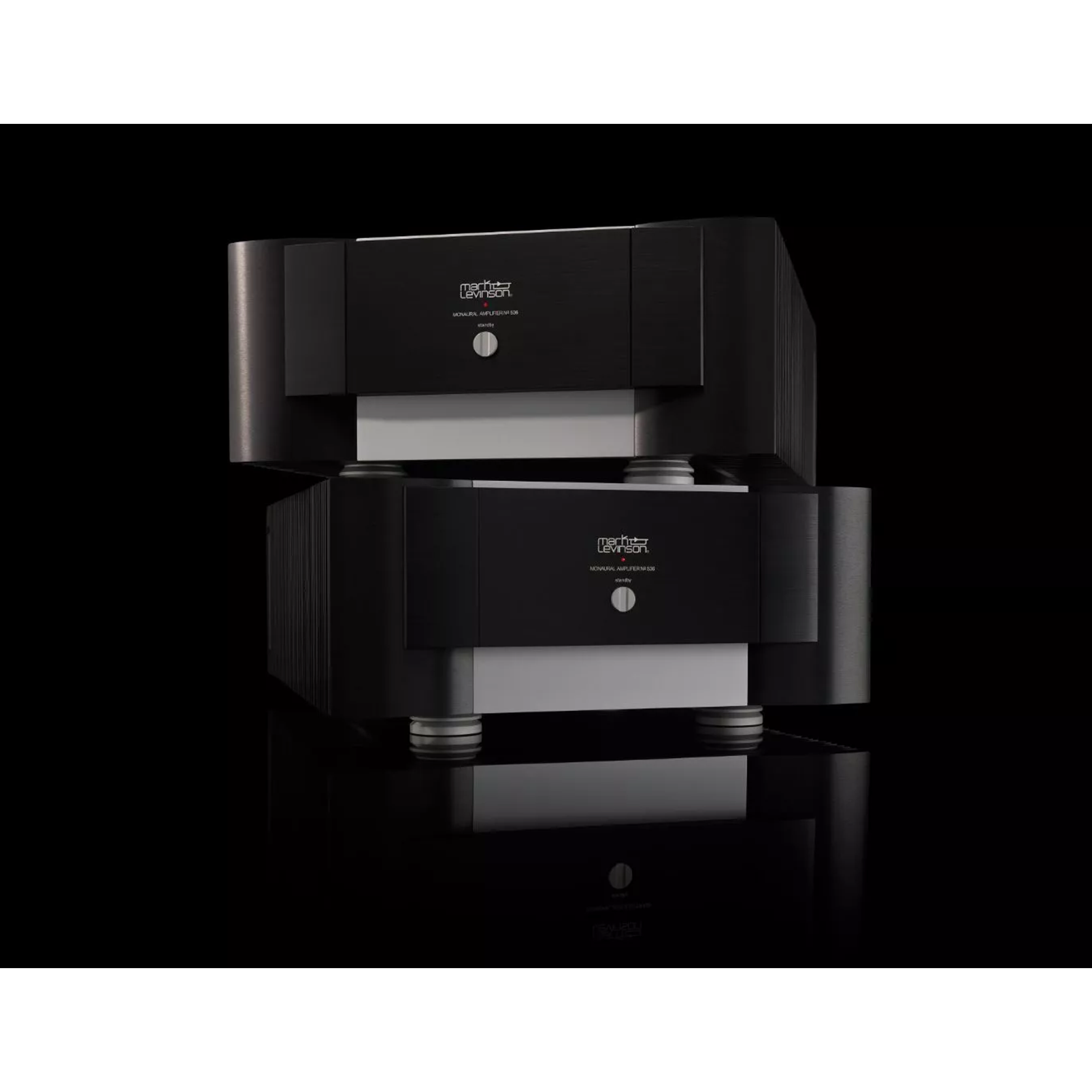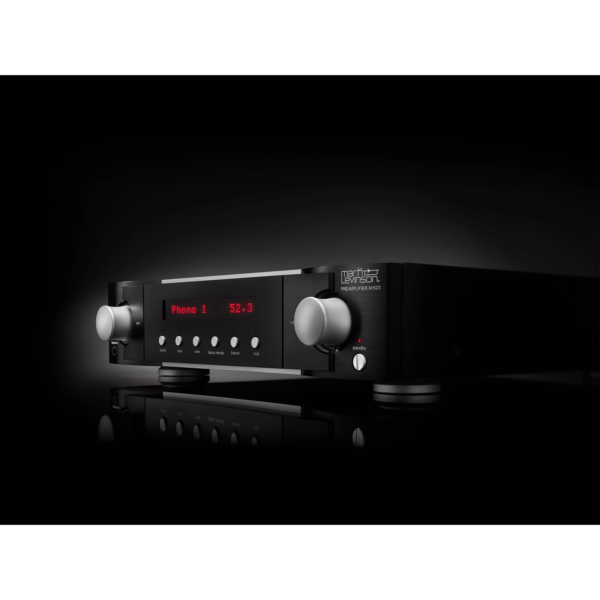Mark Levinson
Mark Levinson № 536 Fully Discrete Monaural Amplifier
Discern the very subtlest details in your music — at any volume — with the Mark Levinson № 536. This Pure Path monoblock amplifier provides a deep, expansive soundstage and accurate image placement while delivering an incredible 400 watts per channel. Pair a single № 536 to each of your loudspeakers for the ultimate in stereo performance — and share the experience of discovering details in your favorite music that you’ve never heard before.
Rediscover your music with uncompromising performance
Powerful Amplification
Unleash the full potential of your music as you go from the quietest lows to the loudest crescendo. The № 536’s toroidal transformer delivers massive power to your speakers. It’s shielded and encapsulated to minimize electrical and mechanical noise, allowing you to focus completely on your music.
Pure Path Circuit Design
Our proprietary approach to circuit design delivers uncompromising musical purity and an engaging listening experience. By using discrete components carefully selected for their precise function, the № 536 delivers unmatched sound quality that captures the nuances of every note.
Peak Performance
Experience flawless sound whether you’re listening at low level or room-filling volume. The № 536 operates in class-A mode for most listening conditions, delivering outstanding performance and sound quality.
Highlights
| Pure Path discrete, direct coupled, fully balanced, monaural signal path |
|---|
| Expansive, fine imaging, extended low frequency response/pitch, and natural high frequencies |
| Painstakingly optimized, little negative feedback, bandwidth, slewing, and open-loop linearity |
| Fully differential class-AB architecture, operates in class A for most listening conditions |
| Custom-designed, low noise toroid with separate secondary windings for each output stage |
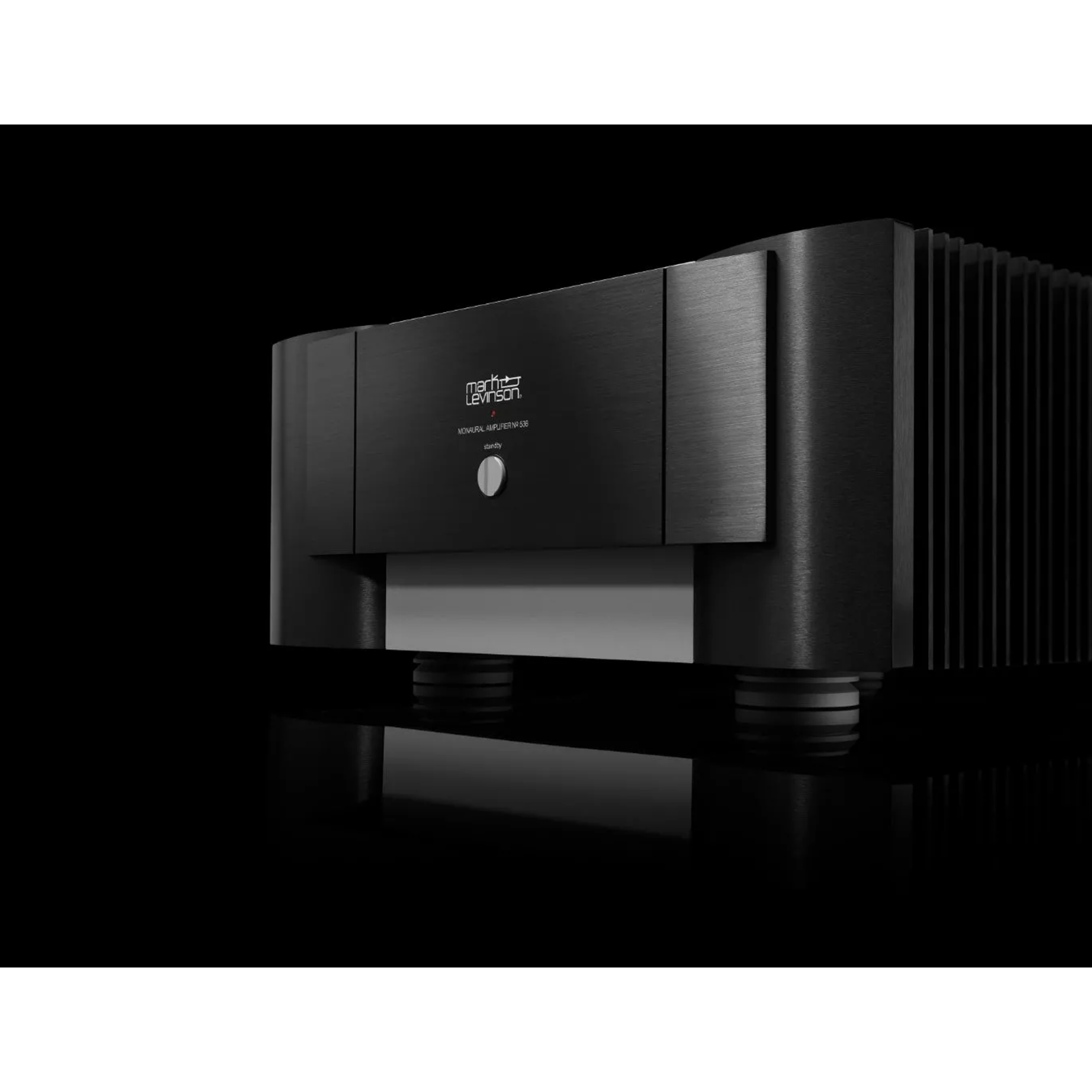
The pursuit of perfect amplification is a well-known theme in high-end audio. New technologies present new approaches, while looking to the past provides inspiration for the future. It was in that spirit that the
Mark Levinson® № 536 amplifier was developed: a design advised by the traditions and art of classic Mark Levinson amplifier designs, and with a specific target sound: a deep, expansive soundstage, accurate image placement, extended low bass response with good pitch definition, and detailed high frequencies free from “etching.” To that end, the Mark Levinson engineering team started with the following requirements:
- Harmonic distortion <0.02% at 1kHz and <0.2% at 20kHz
- Bandwidth extending from 0.2Hz to 120kHz, and beyond if possible
- Critically damped square wave response, with leading and trailing edges free of any slewing artifacts, and a slew rate of at least 100V/µs
- Maximized open-loop linearity and bandwidth, with global negative feedback in the range of 12-20dB and without nested feedback loops
This fully differential, fully discrete, monaural Pure Path amplifier drives virtually any loudspeaker effortlessly for impeccable imaging, musicality, and openness. A direct-coupled signal path; a highly linear, low-feedback design; and voltage gain and drive stages operating in class A, are joined by the modern system integration capabilities provided by Ethernet, RS-232, and USB for monitoring and network control. Housed in a 6000-series aluminum chassis, like all Mark Levinson equipment, the № 536 is designed and handcrafted in the USA.
Mark Levinson Pure Path Circuit Design
Since 1972, Mark Levinson has been dedicated to the uncompromising art of sound, with the guiding principle of musical purity above all else. To achieve that goal like never before, Mark Levinson engineers scoured company archives, ultimately developing a circuit-design philosophy called Pure Path. On a conceptual level, its hallmark principles include a discrete, direct-coupled, fully balanced, monaural signal path that delivers unrestricted, uncompromised sonic purity.
Far from merely arranging high quality components in an intelligent manner, Pure Path is the meeting of science and art: Mark Levinson engineers are tasked to create the best possible measured AND subjective performance. To quote Albert Einstein: “Everything should be made as simple as possible, but not simpler.” Pure Path highlights in the № 536 include Folded Cascodes, an extremely high bias current, and usage of very little negative feedback.
The Folded Cascode
Mark Levinson components are designed around a Pure Path amplifier circuit concept that makes heavy use of a circuit design element called a cascode. Originally created for improving the bandwidth of vacuum tube circuits in radios, Mark Levinson engineers deploy cascodes in Pure Path circuit designs to both improve bandwidth and enhance linearity. A cascode combines two transistors so that they operate as a single composite device that functions like a single transistor, using the wanted characteristics of each component transistor, and rejecting the unwanted characteristics.
Mark Levinson engineers began their design of the gain stage with pairs of JFETs (junction field-effect transistors), chosen for their low noise and high gain. JFETs achieve these characteristics in part by being large, and with their large size comes nonlinear gain – or distortion. To mitigate this, BJTs (bipolar junction transistors) were added to the circuit. The BJTs exhibit very low input impedance and very high output impedance, which translates to excellent bandwidth and linearity. By creating a cascode of the JFETs and BJTs, they created a design with the best characteristics of both sets of devices.
Engineers than connected the output of the cascode to another transistor of the opposite “gender.” Current flows through it in the opposite direction to “turn around” the direction of the signal current. This special connection is called a Folded Cascode and it is a hallmark of the Pure Path circuit: high gain with low noise, wide bandwidth, and excellent linearity.
Gain Structure
The audio circuitry in the № 536 has been optimized for the best possible open-loop performance. As a result, very little negative feedback is necessary, and the amount employed could be adjusted to achieve certain subjective or objective results. The open-loop gain and bandwidth of the circuit were painstakingly set using precision resistors and compensation capacitors, and additional precision resistors were employed to compose the feedback network.
Military Grade Components
All Mark Levinson equipment employs electronic components carefully chosen for their specific task. Gain-stage JFET pairs have high gain, low noise, low distortion, and because they are encapsulated in the same package, the two devices operate under nearly identical conditions. Capacitors used in critical filtering locations are film types, noted for their consistent performance regardless of temperature and frequency. Finally, resistors in critical gain-setting and feedback locations use tantalum nitride thin-film elements. An extremely costly material, tantalum nitride typically finds use in sensitive military equipment because it is unusually stable with respect to temperature, exhibits very low noise, and is unaffected by magnetic fields. In fine audio equipment, those characteristics make the sound even more revealing and effortless, free of the low-level nonlinearities caused by lesser resistive materials as they heat and cool under dynamic conditions. Housed in an aircraft-grade 6063-T5 extruded aluminum chassis, the № 534 features extremely high build precision, to exceedingly low tolerances.
Completing the Signal Path The № 536 offers balanced and single-ended inputs for use with virtually any preamplifier or source player with variable output. For connection to loudspeakers without needing tools for a secure link, the № 536 features two pairs of gold-plated binding posts with Mark Levinson Hurricane terminal knobs to support either standard or bi-wired loudspeaker connections. Speaker cables terminating in banana plugs can be used in the USA and other non-European countries.
System-integration connectivity includes Ethernet/IP control, RS-232, USB for monitoring and configuration via web page, plus 12V triggers.
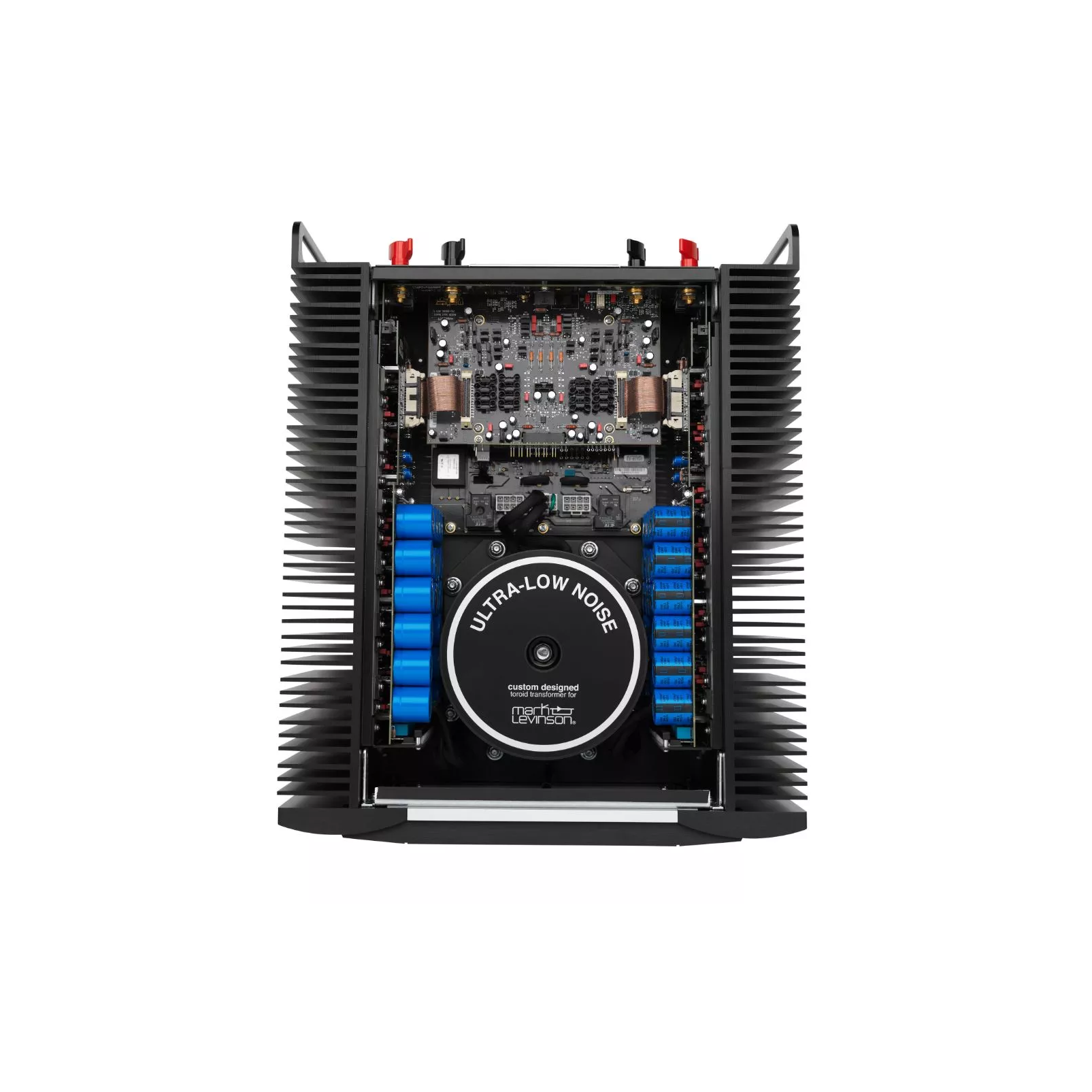
- 1 unbalanced RCA input
- 2 pairs of “Hurricane” loudspeaker outputs w/ bananaplug sockets p/ch
- 1 3.5mm mono (tip/sleeve) mini plug trigger input, 3-12Vdc
- 1 3.5mm mono (tip/sleeve) mini plug trigger output, 3-12Vdc
- 3-pin IEC standard power connector
- Normal Standby: 65W
- Power Save Standby: 5W
- Green Standby: <0.5W
- Height (without feet): 17.5cm
- Width: 43.8cm
- Depth: 53.3cm
- Shipping weight: 53kg

